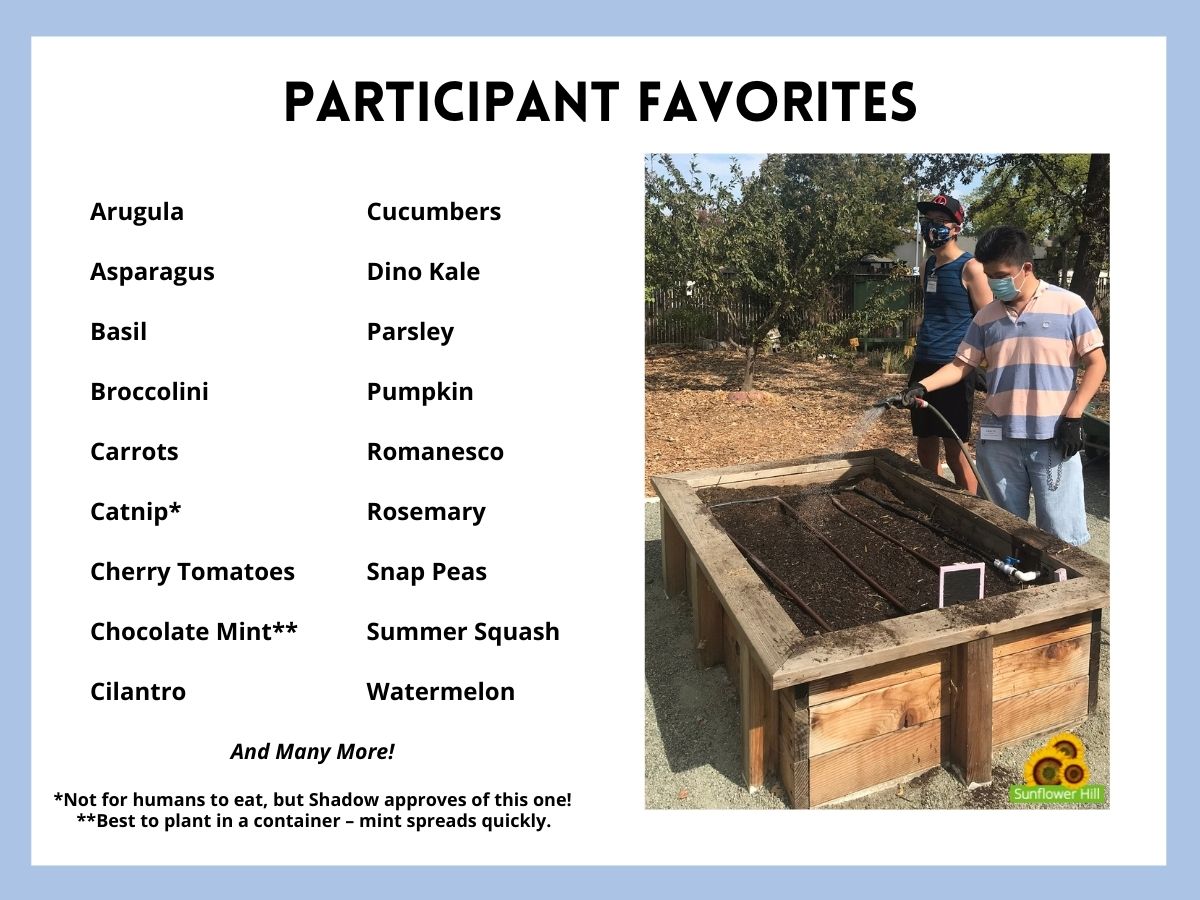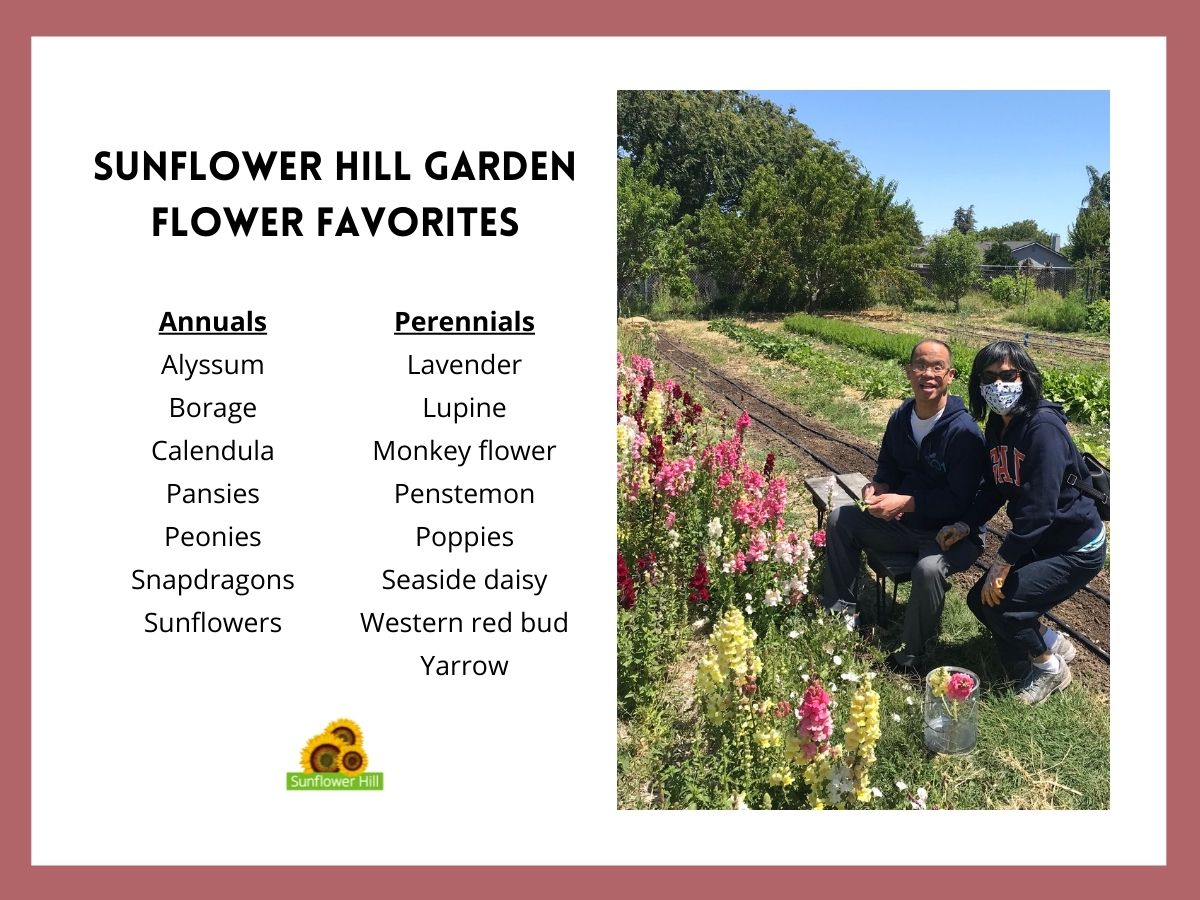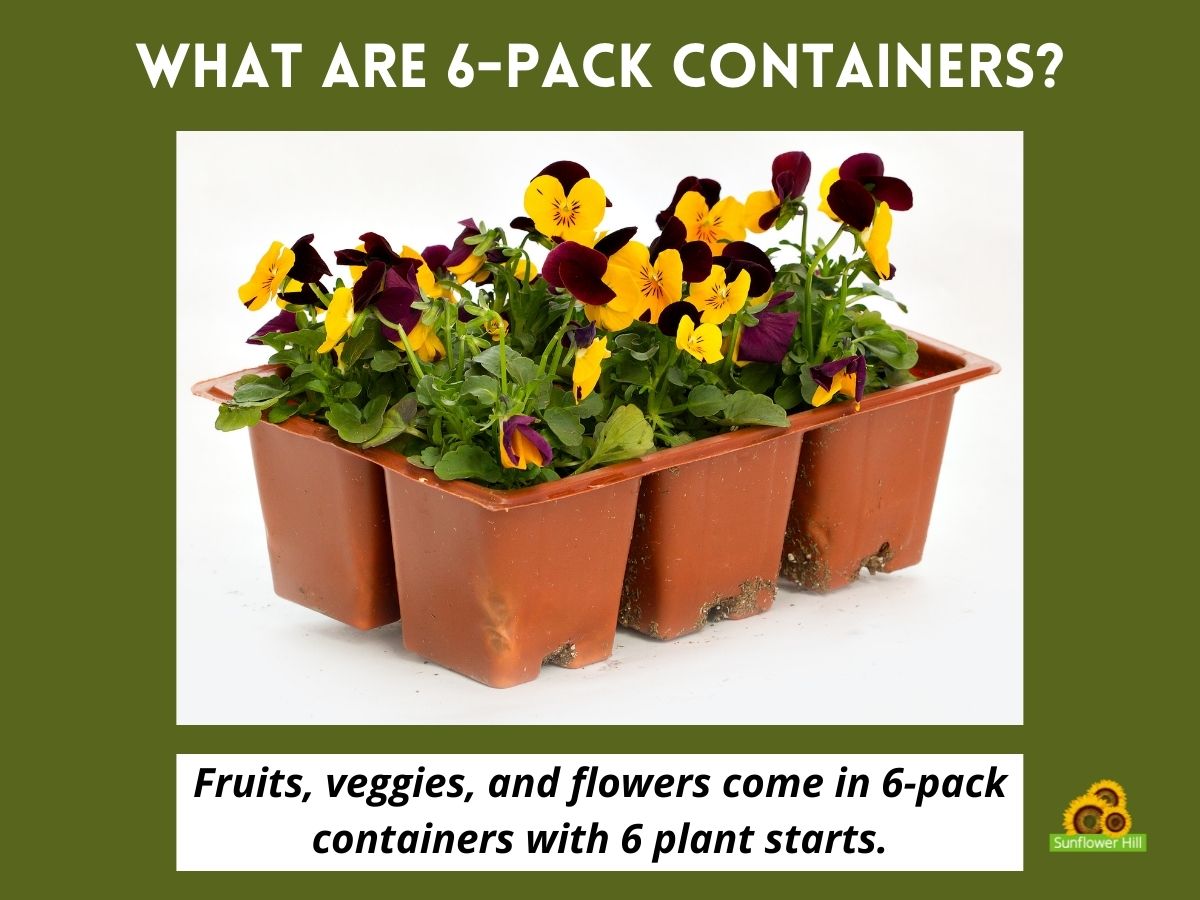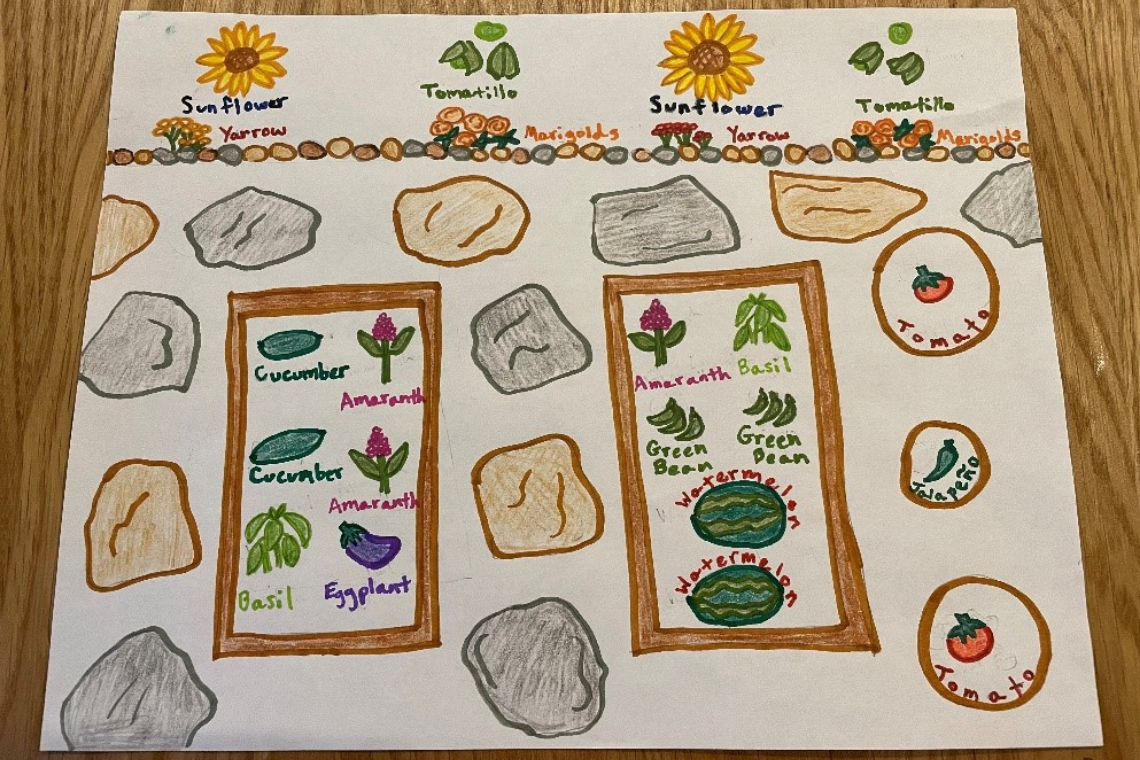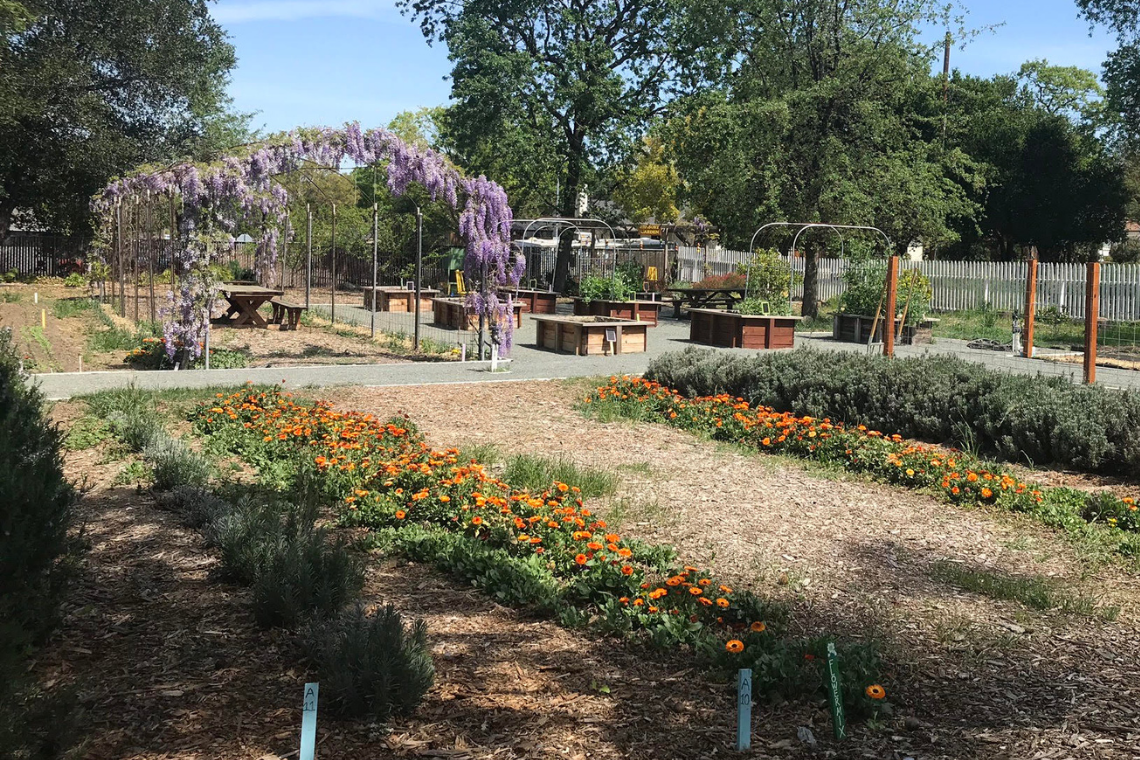Plan Your Future Garden Now
November 10, 2021
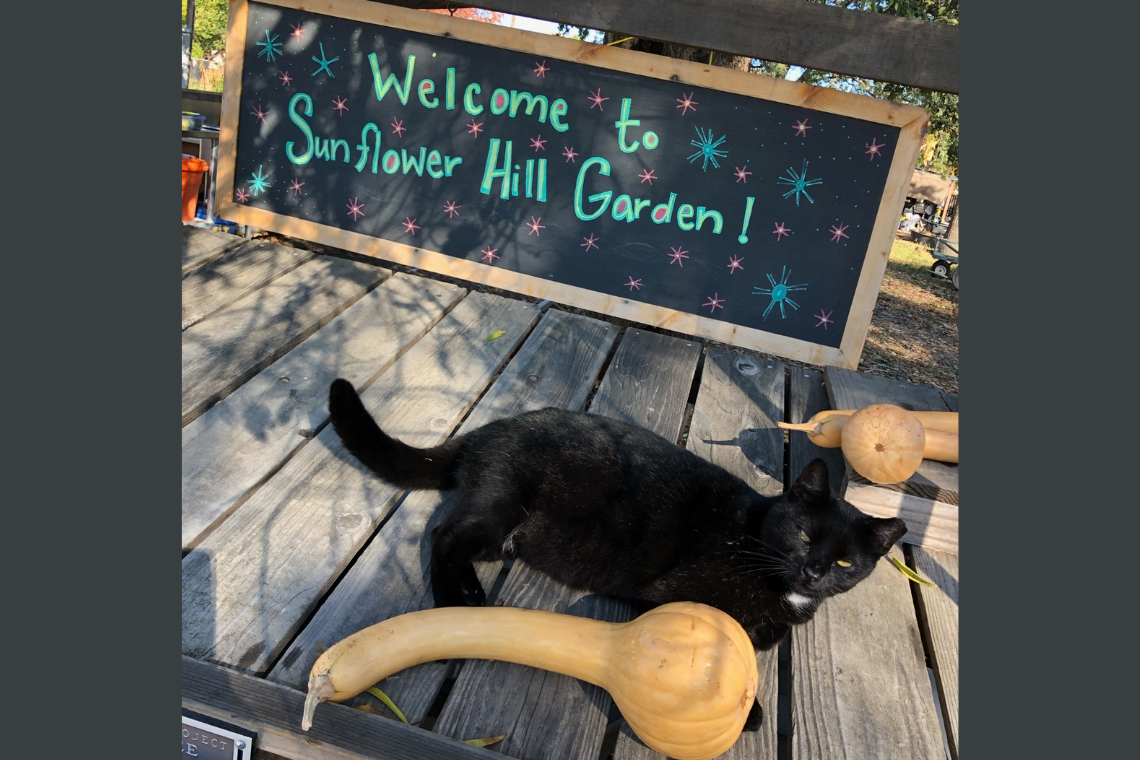
With the cooler weather and winter just around the corner, now is the ideal time to plan your spring garden! Yes, even though your at-home garden might be “sleeping” right now, there’s no reason you can’t start planning and preparing your garden to “wake up” in the spring. This blog article will guide you through some different things you can do to plan your spring (or summer/fall/winter) garden to provide you with a successful year of delicious food and beautiful flowers!
Start with Your Favorites Edibles
One of the first things you need to consider when planning your future garden is what you want to plant! A good way to start is to make a list of different fruits or veggies you enjoy eating.
We plan our garden based on what our program participants like growing and eating. Below is a list of some of their favorites:
Add Some Flowers
Along with your favorite edible plants, you can add flowers. Flowers attract our pollinator friends, like bees and butterflies, and will help your garden flourish! Flowers fall into two categories: annuals or perennials. Annuals bloom once during their season, drop their seed and die down. Perennials remain year-round, blooming and going dormant cyclically with the season. Here are a few flowers we plant in the Sunflower Hill Garden:
If you don’t live in California, or are looking for different options, visit your local nursery and walk around to see what shapes, colors, and sizes catch your eye. In our experience, local nursery staff are incredibly helpful in answering questions to narrow down your selection!
Grab Your Calendar
As you might know from your own garden or participating at the Sunflower Hill Garden, not all plants can be grown year-round. (Though we definitely wish we could grow strawberries all the time!) Most plants have a preferred season where the weather conditions are right for that plant to grow its best. Plants typically fall into two crop categories: cool season crops or warm season crops. If you’re unsure as to what type of crop a plant is, just visit your local nursery or do a brief search online. If you want to start plants from seed, check out our blog article on Starting from Seeds.
You can also check out the Alameda County Master Gardeners’ website for a month-by-month breakdown of what to plant and when.
Measure and Sketch
Once you have an idea of what you want to plant and when to plant, you’ll need to measure your available garden space to make sure you have enough room for all your plants. For instance, if your garden space is your kitchen windowsill, it may be best to plan for five or six pots, using smaller plants like herbs. If you have a larger garden space with room for larger plants, you will want to sketch or draw your garden space. Below is an example of a garden sketch:
To start your sketch, draw a simple version of your garden space. Where do you have planting space? Be sure to include plants that are already in your garden space in your sketch. Once you have your garden space sketched out, you can begin to draw in or write in what plants you want to go where. Be sure to give plants that will grow big (like tomatoes) enough space once they are fully grown. If you’re unsure what size a plant could get, you can search online for the plants’ spacing or refer to the seed packet of the plant, which will usually tell you about how big the plant will be when it’s fully grown.
Plan. Plant. Grow.
Planning your garden is helpful to do at the start of every season, whether it’s winter, spring, summer, or fall.
Planning ahead sets us up for a successful year of growing food with you! I hope you have fun planning (and planting) your next garden!
Inspired by this article? Donate today!
Story by: Andrea del Rio, Garden Manager
Contributing Writer: Kaitlyn Kuehn, Writer
